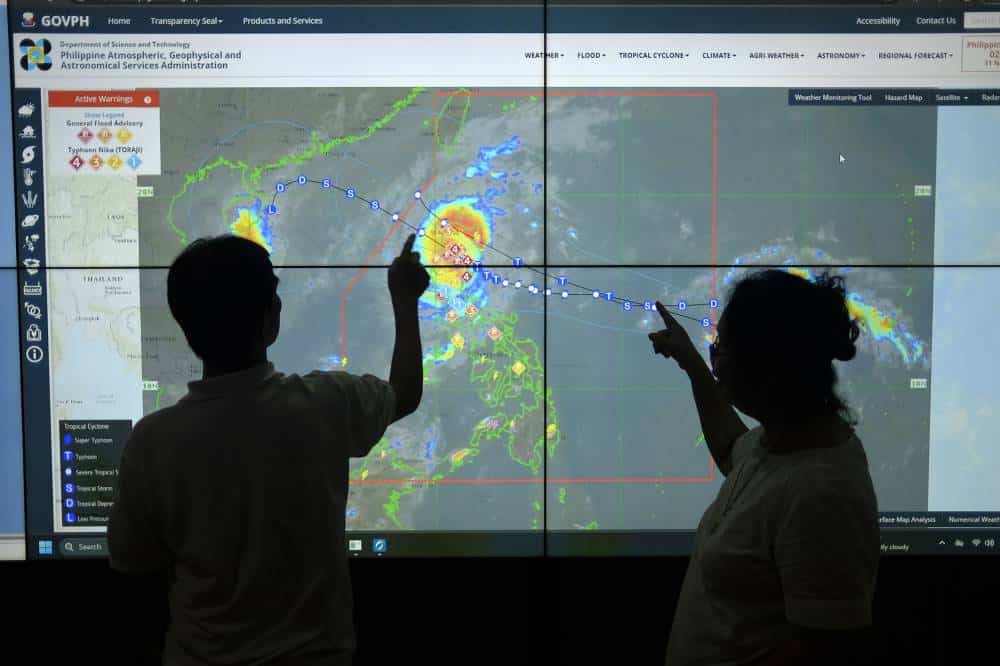Fewer but more intense, dangerous storms hitting PH – Pagasa

State weather bureau personnel show the path and location of Typhoon Nika and other weather disturbance in the vicinity of the Philippines at the PAGASA headquarters in Quezon City in this file photo taken on November 11, 2024. | INQUIRER PHOTO / GRIG C. MONTEGRANDE
MANILA, Philippines – The Philippines has been witnessing fewer but more intense storms in the past few years, the country’s weather bureau said Saturday.
Attributing the phenomenon to global warming, the Philippine Atmospheric, Geophysical and Astronomical Services Administration (Pagasa) said the country should expect this trend to continue in the coming years.
“Based on historical record, decreasing trend ‘yung number ng tropical cyclones dito sa atin, but (may) increasing trend ng mga bilang ng mga bagyo na magiging mas intense (Based on historical record, there is a decreasing trend in the frequency of tropical cyclones here, but there is an increasing trend in the number of typhoons that will be more intense),” Pagasa climate monitoring and prediction chief Dr. Ana Liza Solis said during a Presidential Communications Office-organized media workshop on disaster communications.
ALSO READ:
Cagayan Province after Marce: Northern towns in shambles
Nika, fourth typhoon in a month in PH, makes landfall
Pagasa: 2 weather systems to bring rains over parts of PH
The Philippines had annual average of at least 19 to 20 tropical cyclones the past 10 years, Solis said.
Now, it is seldom the case.
Super Typhoon Categories
“Ibig sabihin, historically, ay marami tayong typhoon at super typhoon category. At continuous ‘yung trend na posibleng mas nagiging intense ‘yung typhoon at super typhoon category natin (That means, historically we have had many typhoons and super typhoon categories. And the trend that our typhoons and super typhoon categories may become more intense is upwards),” she added.
With this occurrence likely to persist amid the increasing severity of climate change, Solis said the way forward is to prepare and craft a long-term adaptation strategy.
“We need to adapt to it at maging resilient kasi darating at darating iyon. We need to cope with it (We need to adapt to it and be resilient because it will come, we need to cope with it),” she told the Philippine News Agency in a separate interview.
The Marcos administration has been formulating ways to address the long-term impact of climate-related disasters, including through key government projects like flood control mitigation structures, construction of irrigation systems and rehabilitation initiatives for major river basins and dams.
The country suffered scores of casualties and billions of pesos worth of damage in properties when six tropical cyclones battered several provinces in a span of two months, the last Super Typhoon Pepito that hit Luzon hardest.
Disclaimer: The comments uploaded on this site do not necessarily represent or reflect the views of management and owner of Cebudailynews. We reserve the right to exclude comments that we deem to be inconsistent with our editorial standards.
